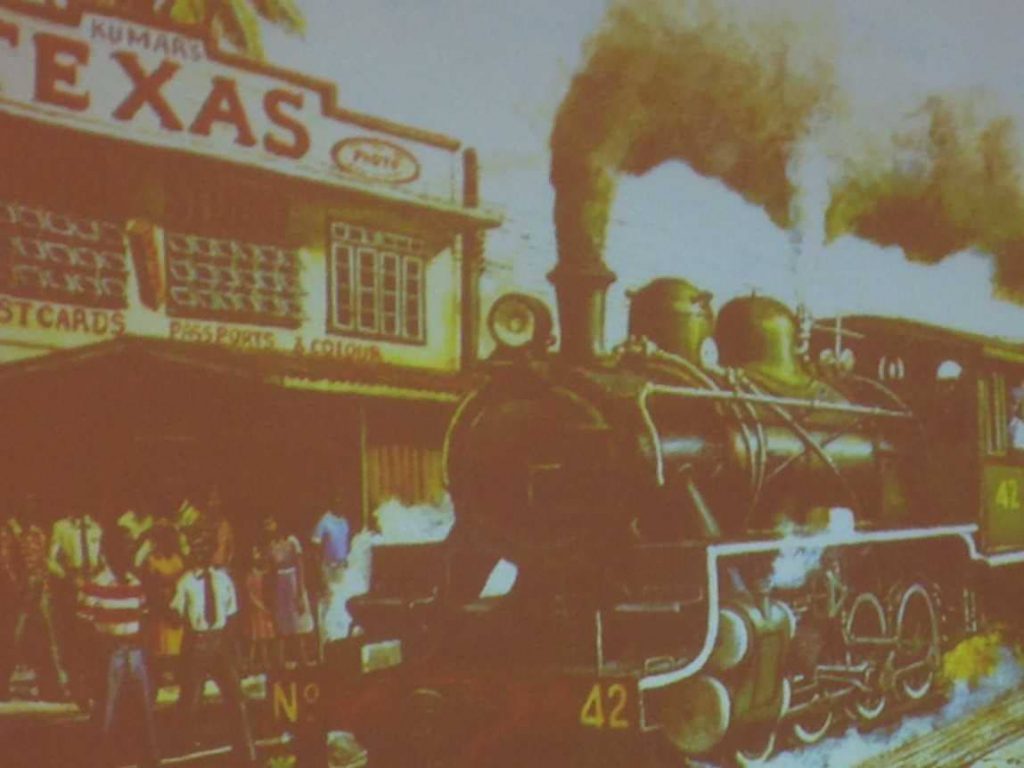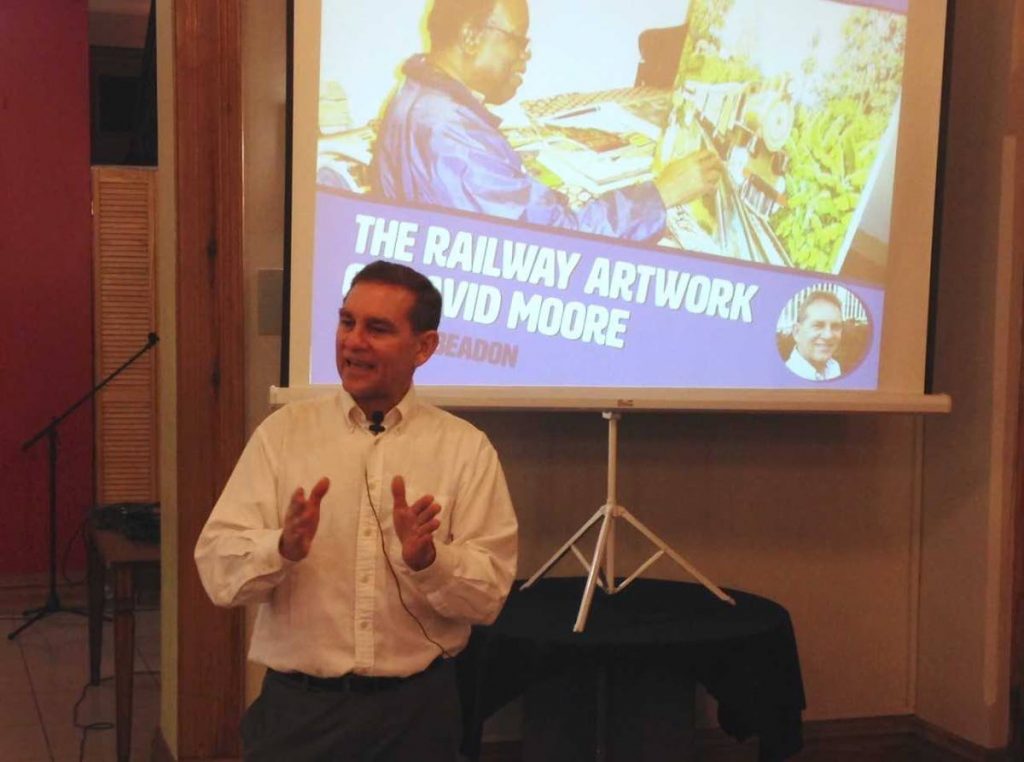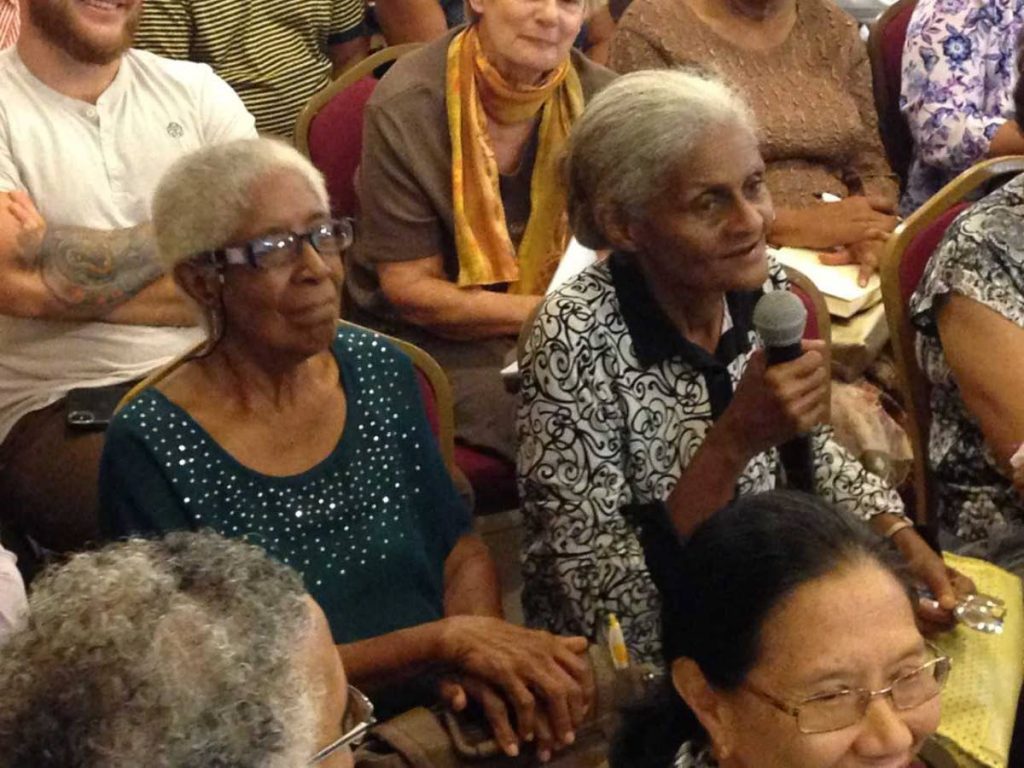Beadon tracks our railways

LISA ALLEN-AGOSTINI
IF you tell Glen Beadon you want to talk about trains, he’ll probably tell you a train is a locomotive engine and at least one carriage, though most people think of the locomotive itself as a train. And if you want him to talk about railways–trains as well as trams–in TT, be prepared for a long chat. “If you leave me here I could do this all night,” Beadon admitted in his lecture/discussion on TT railways and the paintings of David Moore, March 21 at the Old Fire Station, Port of Spain.
The talk, hosted by the National Trust, is one of an ongoing series of public presentations, including tours, on local history.
Beadon, who lives in the UK, describes himself as a railway enthusiast. He has been collecting information on and paraphernalia from our railways for 30 years, he said in a brief bio he supplied to the Newsday. He was born in San Fernando and worked in the oil and gas industry before retiring; he now plans to write a book on his hobby.
“A railway enthusiast looks at the locomotives, signals, signalling system, track system, every single carriage,” he said. He collects tickets and paraphernalia and even has buttons from the Trinidad Government Railway (TGR) uniform: they were silver metal embossed with a crown over the letters TGR.

The paintings of artist David Moore formed a springboard as Beadon went through railway history by talking about individual trams, engines, carriages and stations –most of which are long gone. The history lesson reached back to the late 1800s when the first tramway appeared in San Fernando.
He doesn’t call himself a historian, but Professor of Caribbean Social History Bridget Brereton said at the lecture, “You are a historian and I’ve been watching your YouTube videos.” She praised his “decades of work”.
“I’m glad to be able to hear you in person,” she said.
Moore, who lives in Florida, was not in TT for the event; Beadon said he was unwell after a recent fall. Moore has done a number of paintings of TT trains and trams, showing a world that has all but disappeared since the closure of the TT rail system in the 1960s. Beadon commissioned Moore to make work based on photos and sketches of real trains and locations from Trinidad’s past, in addition to Moore’s own famous pieces housed at the PTSC and other public areas.
“David has no e-mail. I’m glad about that, because I have several letters 40 pages long in his own handwriting, with sketches. I treasure that stuff,” Beadon said.
As he went through the slides of sketches, paintings and photos, Beadon told the packed room about each individual carriage, locomotive and tender he showed, the tracks, the signals, the platforms and even neighbouring homes, buildings and flora. (Was there dasheen bush growing by the Lopinot platform? Moore has a photo that says yes; and so it’s in the painting of a steam coach Moore did for Beadon.)

While discussing Moore’s painting of the last train to run on the TGR, Beadon said, “Engine 42 pulled the very last train into Port of Spain on December 28, 1968. The engine at San Andreas [National Museum at South Quay, PoS] is marked 42, but that’s not 42.” It’s really Engine D, he said.
Later on, during the hour-long conversation following the presentation, he said, “I used to tell people that Locomotive D was just a shunting engine. Actually, that’s a very historic engine. That engine was brought here in 1914 to work on the Cipero Tramway, to run cane traffic and to pull passenger trains.”
He talked about Engines 19 and 20, which were the only two engines built in workshops in Trinidad. “At the end of WWI (World War One) there was a locomotive shortage and they had to do something, so they built these two engines.” They were made from salvaged parts and a Kitson boiler.
Beadon recently visited Barbados to see the work being done at St Nicholas Abbey where a heritage railway is being reconstructed as a tourist attraction. “Hopefully some day we’ll have a similar thing,” he said. Meanwhile, Beadon noted throughout his talk, our railway was dismantled and allowed to crumble. Most of the engines were scrapped in the 1970s, Beadon said.


Comments
"Beadon tracks our railways"